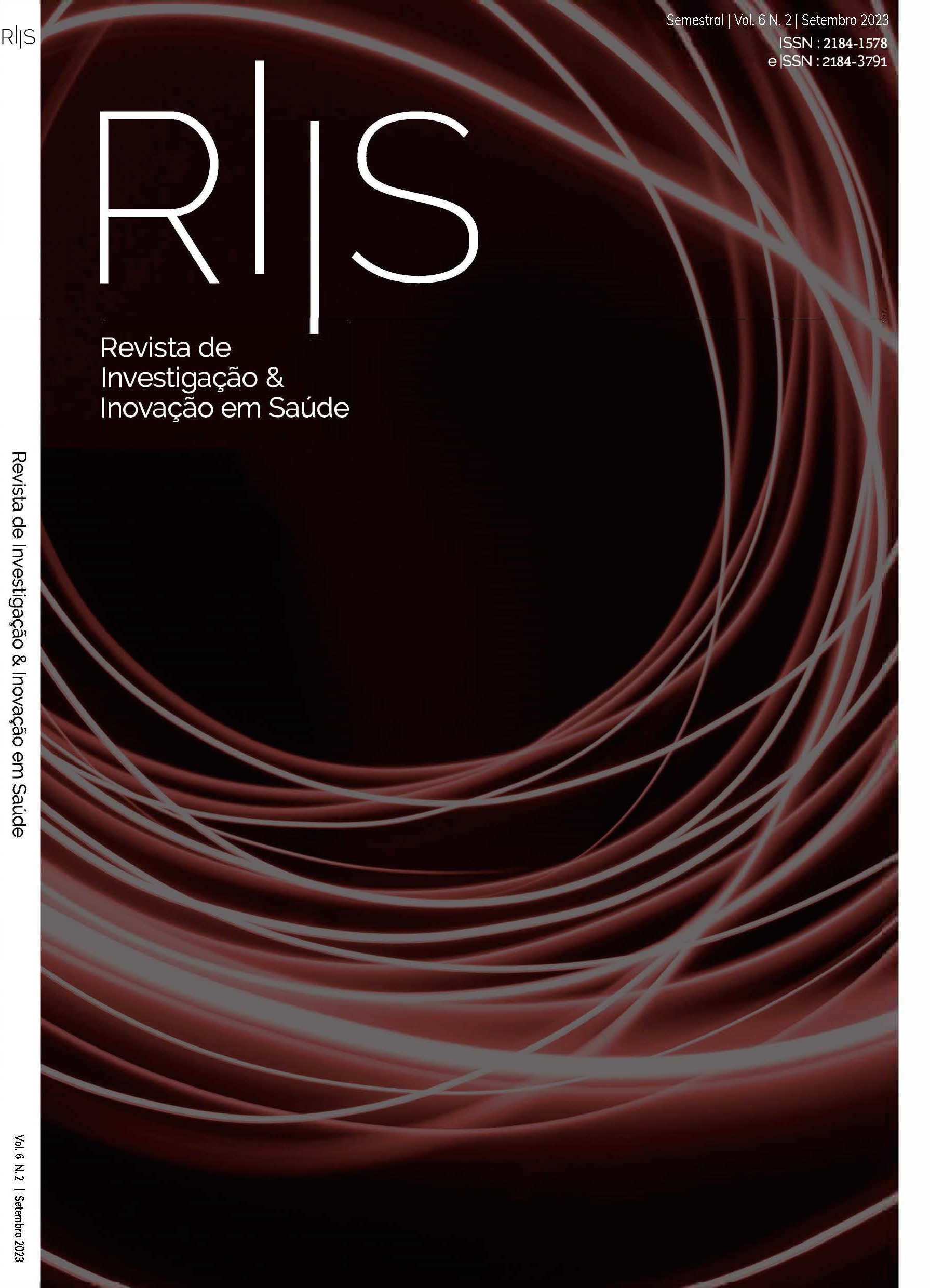Adolescents with DM1: knowledge about disease and difficulties in self-care
DOI:
https://doi.org/10.37914/riis.v6i2.270Keywords:
Adolescent, Diabetes Mellitus, Type 1, Self-Care, NursingAbstract
Background: type 1 Diabetes Mellitus is a chronic disease increasingly prevalent in children, thus it is essential to encourage adherence to self-care and minimize the difficulties experienced. Objectives: characterize the knowledge of adolescents with type 1 diabetes mellitus about their disease and identify their difficulties in self-care. Methodology: quantitative, simple descriptive study. Application of Knowledge Test of Adolescents with DM1 about the disease and the Inventory of Difficulties in Self-Care Roles by Flora & Gameiro (2016). Data collected between june and november 2021 at Diabetes Consultation of a Hospital in the central region of Portugal. Sample of 34 diabetic adolescents with a mean age of 14.9 (±2.3) years. Results: in overall knowledge, adolescents show a level of knowledge between reasonable and good, and it is in domain 1 (Nature of the disease/physiopathology) where they show the best level of knowledge. In the difficulties in the self-care roles, they show higher percentages of difficulty in maintaining a balanced diet, fighting stress and interventions when facing hypoglycemia. Conclusion: adolescents have difficulties in self-care roles, and the nurses' intervention in the implementation of adjusted therapeutic plans is essential to overcome the knowledge gaps and reduce the identified difficulties
References
Azevedo, A. (2010). Processo de transição do adolescente hospitalizado numa unidade de adolescentes. Porto: Instituto de Ciências Biomédicas de Abel Salazar da Universidade do Porto.
Bertoldo, C., Neves, E., Ribeiro, A., Barreto, C., Oliveira, D., & Marafiga, C. (2020). Perspective of adolescents living with diabetes mellitus about self care. New Trends in Qualitative Research(3), 347-358.
Direção Geral da Saúde. (14 de janeiro de 2011). Norma nº002/2011 - Diagnóstico e Classificação da Diabetes Mellitus.
Direção Geral da Saúde. (2013). Programa Nacional de Saúde Infantil e Juvenil. Lisboa: Direção Geral da Saúde.
Direção Nacional da Saúde. (2015). Programa de Prevenção da Diabetes Mellitus e outros distúrbios metabólicos: Manual de controlo e seguimento da Diabetes mellitus. Praia, Lisboa: Direção Nacional de Saúde.
Direção-Geral da Saúde. (2019). Crianças e jovens com Diabetes Mellitus Tipo 1 Manual de formação resumido para profissionais de saúde e de educação. Lisboa: DGS.
Direção-Geral da Saúde. (2020). Programa Nacional para a Diabetes 2019: desafios e estratégias. Lisboa: DGS.
Filipe, V. (2016). Satisfação das crianças/ jovens na consulta de diabetes: inflência das variáveis clínicas. Viseu: Escola Superior de Saúde de Viseu: Instituto Politécnico de Viseu.
Flora, M. (2013). Gestão do autocuidado dos Adolescentes com Diabetes Mellitus tipo I. Coimbra: Escola Supeior de Enfermagem de Coimbra.
Flora, M., & Gameiro, M. (2016a). Autocuidado dos Adolescentes com Diabetes Mellitus Tipo 1: Conhecimento acerca da Doença. Revista de Enfermagem Referência, Série IV(8), 17-26. DOI: https://doi.org/10.12707/RIV15024
Flora, M., & Gameiro, M. (2016b). Dificuldades no autocuidado dos adolescentes com diabetes mellitus tipo 1. Revista de Enfermagem Referência, Série IV(11), 31- 40. DOI: https://doi.org/10.12707/RIV16062
Fragoso, L., Cunha, M., Fragoso, E., & Araújo, M. (2019). Autocuidado em Pessoas com Diabetes Mellitus Tipo 1: Vivências de Adolescentes. Revista online de pesquisa - Cuidar é Fundamental, 289-296.
International Society for Pediatric and Adolescent Diabetes. (2018). ISPAD Clinical Practice Consensus Guidelines 2018: Definition, epidemiology, and classification of diabetes in children and adolescents. Pediatric Diabetes, 7-19. DOI: https://doi.org/10.1111/pedi.12773
Kaneto, L., & Damião, E. (2015). Avaliação do conhecimento de crianças com diabetes tipo 1: proposta de um instrumento. Revista da Sociedade Brasileira Enfermeiros Pediatras, 15(2), 93-101.
Meleis, A. (2010). Transitions theory: middle-range and situation-specific theories in nursing research and practice. New York: Springer Publishing Company.
Moreira, T., Bandeira, S., Lopes, S., Carvalho, S., Negreiros, F., & Neves, C. (2016). Dificuldades de crianças e adolescentes com Diabetes Mellitus tipo 1 acerca da doença. Revista Rene, 17(5), 651-658. DOI: https://doi.org/10.15253/2175-6783.2016000500010
Organização Mundial da Saúde. (20 de Dezembro de 2020). Obtido de Organização Mundial da Saúde: https://www.who.int/es/news-room/fact-sheets/detail/diabetes
Orem, D. (1991). Nursing: Concepts of Practice. (4 ed.). Saint Louis, USA: Mosby.
Pereira, E., Neto, S., Moleiro, P., & Gama, E. (2015). Exercício Físico em Adolescentes com Diabetes Mellitus Tipo 1. Acta Pediátrica Portuguesa(46), 311-31.
World Health Organization. (2011). Adolescent Health. Geneva, Switzerland: Author.
Downloads
Published
How to Cite
Issue
Section
License
Copyright (c) 2023 Maribel Carvalhais, Andrea Oliveira, Paula Fontoura, Ana Luísa Martins, Ana Rita Oliveira, Diana Jesus, Márcia Mendes, Sofia Silva

This work is licensed under a Creative Commons Attribution 4.0 International License.















